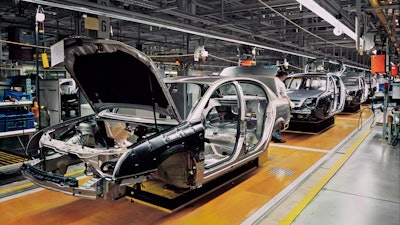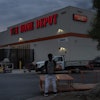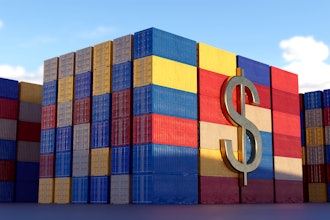
Supply chains everywhere have become too lean — and not just in auto. This trend was highlighted by pandemic-driven shortages in virtually everything – drugs, medical equipment, construction supplies, even toilet paper. The chip shortage alone is projected to impact global automotive sales by 1.3 million units in 2022.
The issues behind these shortages show no signs of abating. The recent Detroit/Windsor bridge blockade, the war in Ukraine, and the fire aboard and subsequent sinking of the Felicity Ace cargo ship transporting 4,000 VW Group cars – each one a black swan event of sorts – further underscore the need to rethink supply chain resilience strategies and risk management.
In a recent Automotive News article, Carla Bailo, CEO of the Center for Automotive Research (CAR) in Ann Arbor, Michigan, said, “We don’t anticipate this will continue happening, but you never know. That’s what makes risk management so important and also so difficult.”
How Did We Get Here?
In the early ’80s, production planners and procurement specialists purchased inventory freely, as there was constant demand from hungry production lines that were straining to meet booming market demand. However, when the economic cycle slowed, manufacturers found themselves suddenly stuck with large inventories, and the pendulum immediately swung in the opposite direction.
The Toyota production system and its ‘just in time’ (JIT) and lean concepts became manufacturing gospel – especially in automotive.
While JIT and lean are important approaches for efficient manufacturing, could it be that the lean approach, in particular, has been taken to risky extremes? In pursuit of greater efficiency and reduced costs, have we changed the equation to such an extent that the risk/reward ratio has become significantly out of balance?
Overextended supply chains, reliance on single sourcing, overzealous inventory management and lean manufacturing are all culpable in putting us in the current situation. In particular, single sourcing and near-zero safety stock can dramatically increase the risk of a line shutdown as a result of an unanticipated supply chain issue.
As recently as March 1, Toyota had to shut down 28 lines at 14 Japanese plants due to a cyberattack on supplier Kojima Industries. Perhaps a little fat in the supply chain diet – especially for critical parts – may not be such a bad idea after all.
Of course, adding “fat” – i.e., buffer – in a supply chain comes with increased financial impacts, as well as potential risk of obsolescence, depending on the item. Hence, this course of action needs to be balanced against the potential benefits in terms of resilience and maintaining customer commitments. Better demand forecast data, visibility deep into supply tiers, hedging and buffering - these are all tools that can be deployed. But it all boils down to this: Companies need to constantly assess and adjust their supply chain strategies to respond to – and ideally, to anticipate – potential constraints, while simultaneously ensuring that they remain competitive on key performance indicators.
Another strategy is to shorten supply chains, which in automotive are precariously extended around the globe – thereby making even the slightest hiccup ripple through like a destructive shock wave. According to Laurie Harbour, CEO of supplier consultancy Harbour Results, “If you’re not going to buy where you build, then understand the risks that are associated with that.”
Industry culture also bears some responsibility for the fragility of automotive supply chains. Typically, OEMs have wielded enormous power to force suppliers to operate on the thinnest of margins, because they themselves have had to fight hard for every dollar of profitability. They have also not permitted suppliers to pass any unexpected cost increases on to them, further tightening the vise on the suppliers.
Of course, the pandemic has changed that, with vehicle inventories at all-time lows, and prices at all-time highs. However, in “normal” (i.e., pre-pandemic) conditions, the major suppliers have also been guilty of similarly pressuring their own suppliers, with a resulting cascade of brutal cost pressure throughout the supply tiers.
The entire dynamic between OEMs and suppliers has been characterized by a lack of trust and transparency and, in many cases, an almost adversarial relationship. If any good can be said to have come out of the COVID pandemic, perhaps it’s that it has forced both OEMs and suppliers to realize their mutual interdependence, and to work toward greater collaboration and trust.
Furthermore, the OEMs and larger suppliers bear the additional responsibility of investing more in supplier development and moving beyond paying mere lip service to the notion of partnership.
While there is reason to hope that some of the lessons learned from the pandemic, in terms of supply chain strategies and supplier relationships, will become institutionalized in the automotive industry’s culture, an extra dose of vigilance is recommended to avoid falling back into old ways, which has been the pattern in the past.
To quote Sunil Chopra, a professor of operations management and information systems at the Kellogg School of Management at Northwestern University, "We'll see a surge now in companies talking about diversification. But as this fades into memory, decision-makers will not take disruptive events into account to the extent that they should. ... In six months, they'll discount the risk all over again."
There’s a plot twist to that quote, however; it was said in 2011, after the Fukushima earthquake in Japan severely disrupted many industries, especially automotive. At the time, Professor Chopra said that at most automakers and Tier 1 suppliers, not much changes after supply chain disruptions. Once they're over, automakers and suppliers go back to business as usual until the next earthquake, tsunami, flood, strike or other event (such as a pandemic, for example) causes a new disruption in the supply chain.
Will history repeat itself?






















